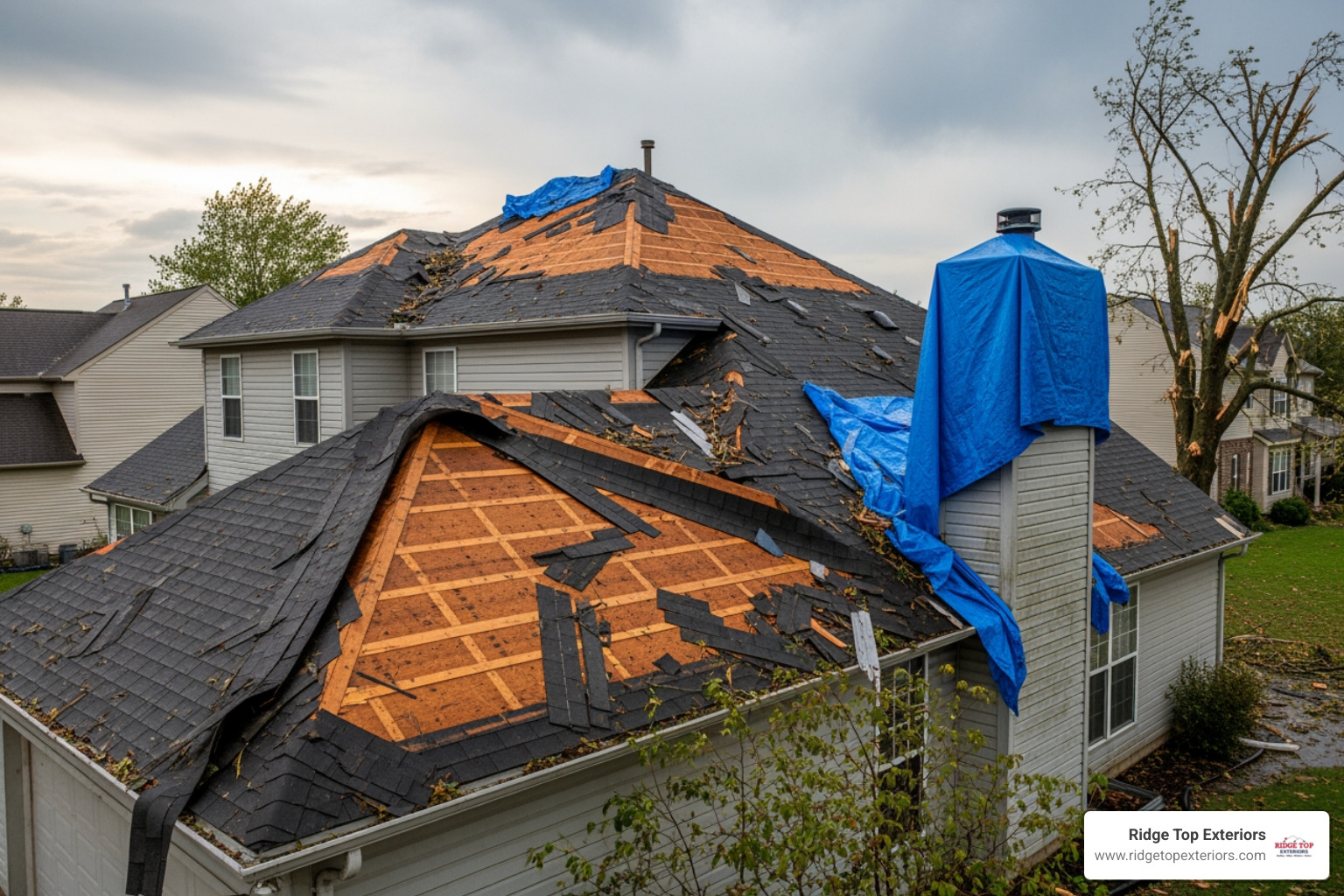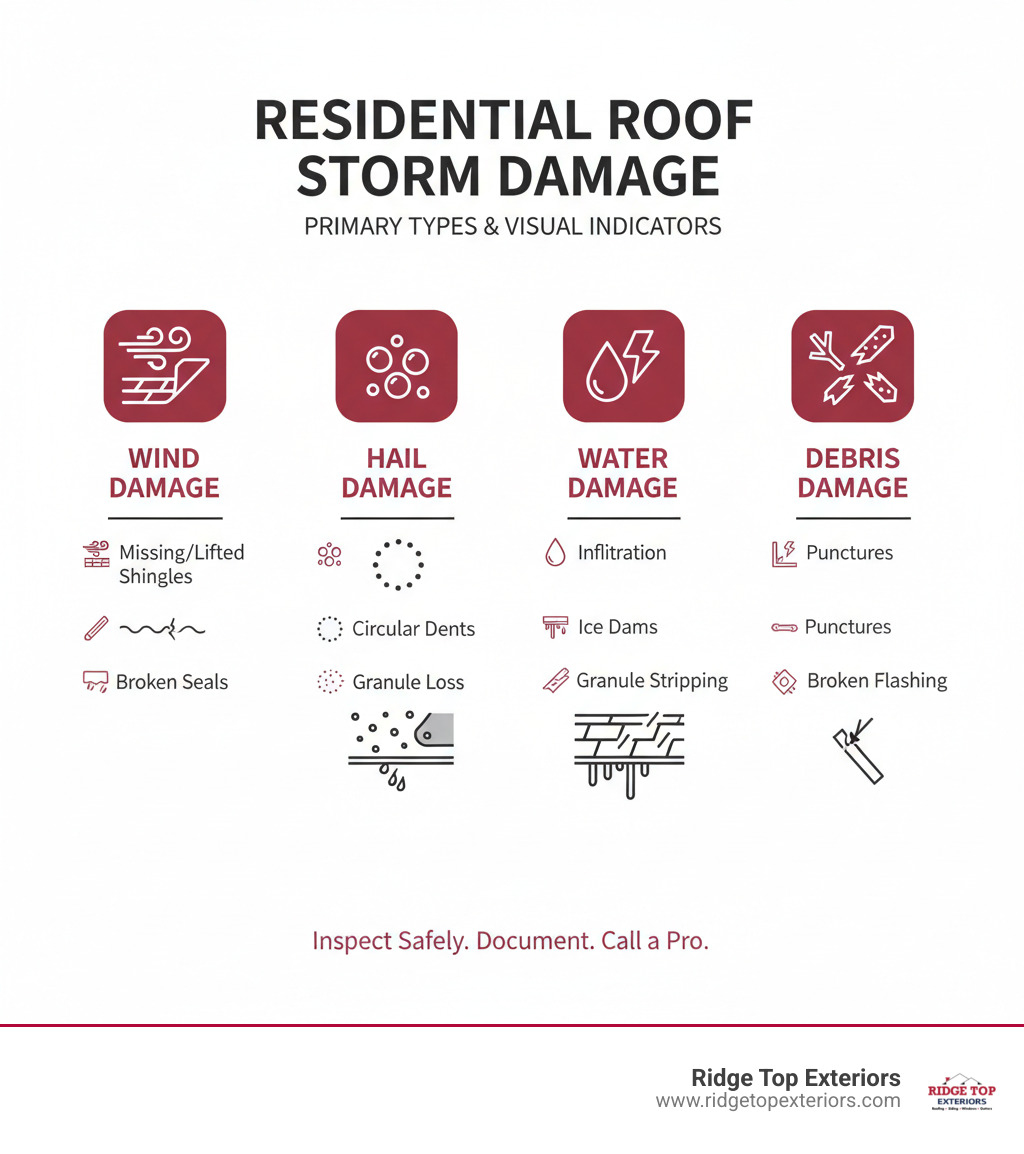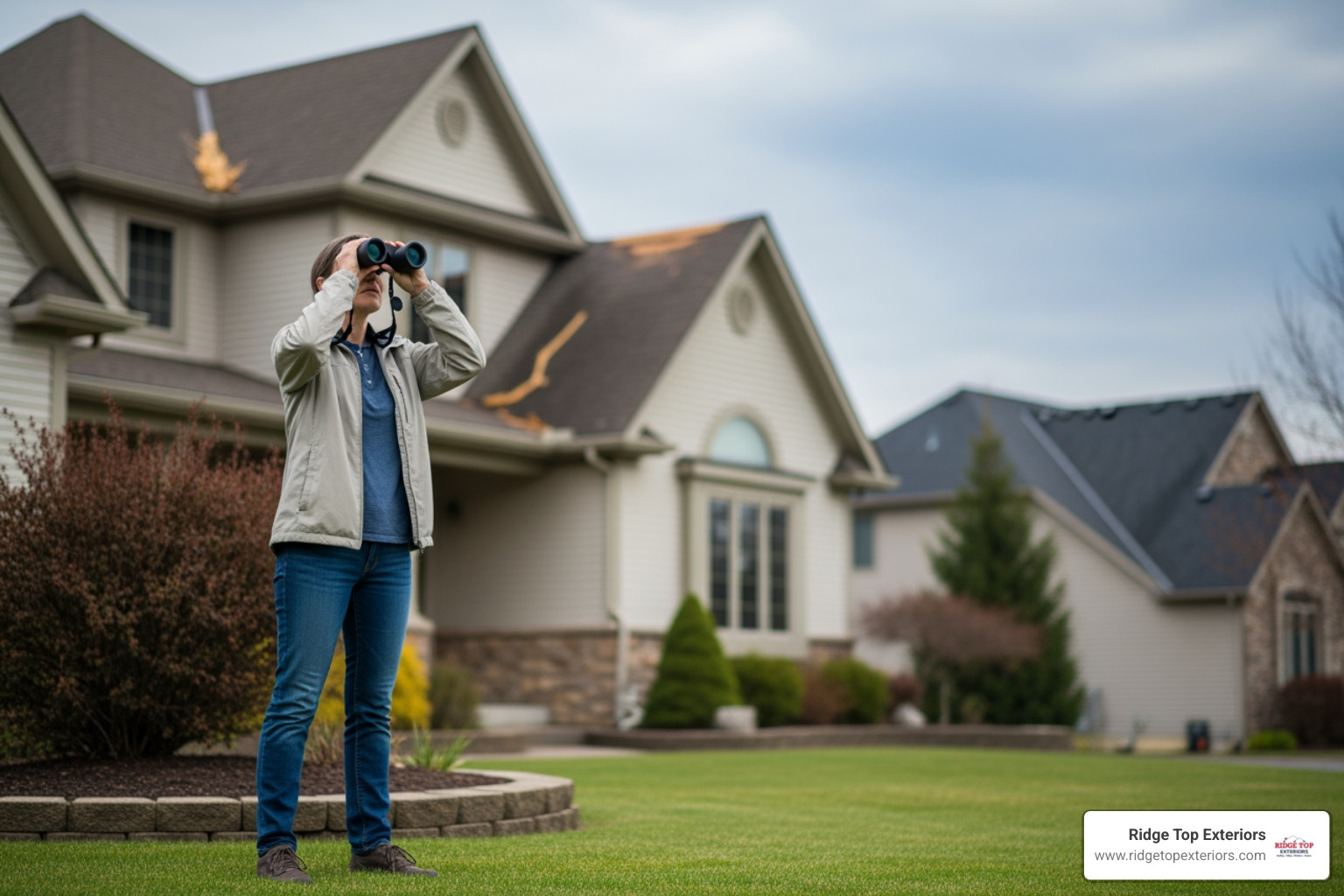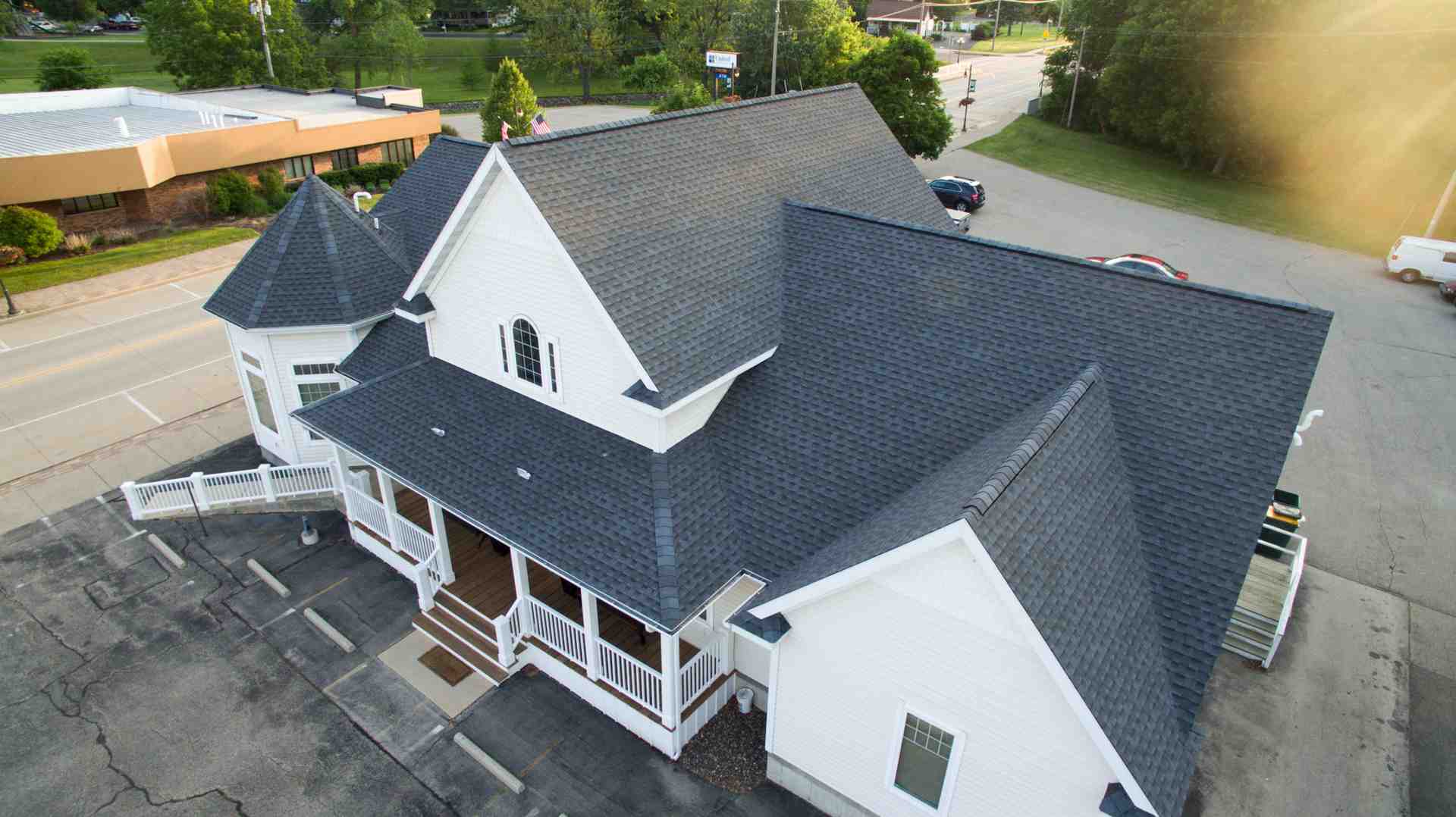
Identify residential roof storm damage, assess impact, & navigate repairs. Get expert tips for inspection, insurance, & restoration.

Residential roof storm damage can turn a homeowner's peace of mind into panic. When severe weather strikes—whether it's high winds, pounding hail, or torrential rain—your roof is the first line of defense.
If you suspect your home has been damaged by a storm, the immediate steps are to prioritize safety by staying on the ground, document any visible issues you can see from the outside or inside your home, and then call a professional roofer for a thorough inspection. A professional assessment is crucial before contacting your insurance company to file a claim.
I'm Carter Joyce, Director of Marketing at Ridge Top Exteriors. With over five years of experience helping homeowners across Wisconsin, Illinois, and Florida steer the aftermath of storm damage, I've seen how quick, informed action can prevent minor issues from becoming costly replacements and save homeowners thousands.

Know your residential roof storm damage terms:
Not all storms are created equal, and neither is the damage they leave behind. In Wisconsin, Illinois, and Florida, we see everything from blizzards to hurricanes. Understanding the specific type of residential roof storm damage you're facing is the first step to protecting your home.
High winds don't need to rip off your entire roof to cause serious problems. Gale-force winds (39-54 mph) and stronger can get underneath shingles, lift them, and break their seals, leaving your roof vulnerable to rain.
Key signs of wind-related damage include:
That's why we install GAF asphalt shingles with advanced WindProven™ Limited Wind Warranty technology—they're engineered to stay put. For more on protecting your roof, check out our guide on roofing solutions for harsh weather conditions.
Hail damage can be deceptive, often causing issues that aren't visible until leaks appear months later. According to the National Severe Storms Laboratory, hailstones can strike at up to 100 mph, causing significant hidden damage.
Look for these signs of hail-related damage:
We offer GAF Timberline® AS II impact-resistant shingles designed to withstand hail. If you suspect hail damage, time is critical for filing an insurance claim. Learn more about connecting with experts at hail damage roofing companies.
Water and ice are silent intruders that can cause serious structural issues before you even notice a problem.

Water and ice damage require immediate attention. The longer you wait, the more expensive the fix becomes.
After a storm, your first priority is safety. Never climb onto a potentially damaged roof, as it can be slippery and unstable. Any visual assessment should be done from the ground, looking for obvious signs of residential roof storm damage.
From the outside, you might notice:

Some of the most critical signs of residential roof storm damage appear inside your home. Be aware of:
If you see any of these signs, it's crucial to document them for your insurance claim. Take clear photos and videos of all damage, both inside and out. Ignoring even minor residential roof storm damage can lead to severe long-term consequences, including mold, wood rot, and compromised structural integrity. What starts as a small leak can escalate into a costly full roof replacement and interior remediation.
If you have active leaks, temporary mitigation might be necessary. However, attempting to tarp a roof yourself is extremely dangerous and can be ineffective. A professional should be called to safely secure the area and prevent further water intrusion while you arrange for permanent repairs. Understanding why you need professional residential storm damage repair is key to protecting your investment.
After you've documented the damage, it's time to bring in the professionals. This is where having an experienced, local partner like Ridge Top Exteriors makes all the difference in getting your home restored quickly and correctly.
While a DIY fix for residential roof storm damage might seem tempting, it's a risk you shouldn't take. Here's why calling a professional is essential:
Navigating an insurance claim for residential roof storm damage can be complex. Here's a simplified guide:
At Ridge Top Exteriors, we have over 20 years of experience working with all major insurance carriers. We help our customers by providing detailed estimates and communicating with adjusters to ensure a fair and smooth process. For more guidance, visit our page on insurance claim help.
Deciding whether to repair or replace your roof depends on a few key factors:
A full replacement with a modern GAF roofing system from Ridge Top Exteriors provides superior protection, improved energy efficiency, and improved curb appeal. It also comes with the peace of mind of our GAF Golden Pledge Warranty, which offers up to 50 years of coverage.
Every roof and storm damage situation is unique. That's why we offer free, no-obligation inspections to help you make the decision that's best for your home and your budget.
After a storm passes, homeowners often have similar questions about what they're seeing on their roofs and what steps to take next. Here are the most common concerns we hear at Ridge Top Exteriors, answered with the clarity you need to make confident decisions.
There's no magic number. The decision to replace depends on your roof's age, the extent of the damage, and local building codes. If your roof is over 15 years old, has widespread damage (like significant hail impacts or granule loss), or if repair costs approach 30-50% of a new roof's cost, replacement is usually the best option. For context, a typical roof replacement in Wisconsin can range from $12,500 to $18,125, but exact pricing requires a free, on-site inspection to assess your roof's specific pitch, complexity, and material needs.
Residential roof storm damage varies by storm type.
During our professional inspections, we document every instance of damage with photos and measurements to ensure nothing is missed.
This is a common concern. The good news is that filing a single claim for storm damage, which is considered an "Act of God," typically does not directly cause your individual premium to increase. Your policy exists for these exact situations.
However, if a major storm causes widespread damage in your region, insurers may apply a general rate adjustment to the entire area. This is not a penalty against you for filing a claim. The peace of mind from a properly repaired roof far outweighs this possibility, as ignoring damage can lead to far more expensive problems that may not be covered later. We have extensive experience helping homeowners with the claims process. Learn more about our insurance claim help services.
Navigating residential roof storm damage can be overwhelming, but with the right information and professional support, it doesn't have to be. Remember the key steps: inspect safely from the ground, document everything carefully, and call in the professionals.
At Ridge Top Exteriors, we've been the trusted experts in roofing for over 20 years, serving over 45,000 satisfied homeowners with a 98% customer satisfaction rating across Wisconsin, Illinois, and Florida. We understand the unique challenges posed by storms in our service areas, from the heavy snows of the Midwest to the hurricanes of Florida. Our commitment to honesty, professionalism, and best craftsmanship ensures your home is protected with industry-leading GAF asphalt shingles and the best warranties.
Don't let storm damage compromise your home's safety and value. Take preventative measures like regular roof care inspections and keeping trees trimmed. But when the sky falls, know that we are here to help.
Contact Ridge Top Exteriors for a free, no-obligation storm damage inspection. Let us bring our 20+ years of expertise to your doorstep and restore your peace of mind. We're ready to provide you with a high-quality roofing solution that stands strong against the next storm.
Get your free consultation today!

Discover How much does a roof cost in Milwaukee? Get accurate estimates, factors & financing for your new GAF roof.
Read More
Unlock Florida home hardening funds! Learn My Safe Florida Home Grant eligibility, steps, and save on insurance with expert upgrades.
Read More
Uncover how much does a roof cost in Madison WI. Explore GAF shingles, cost factors, ROI, and get a free estimate today!
Read More